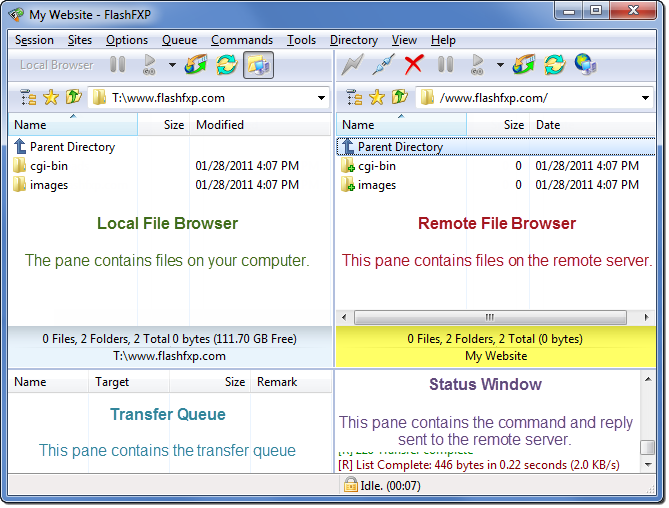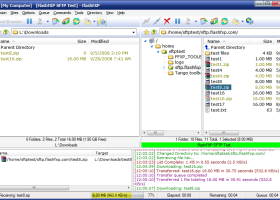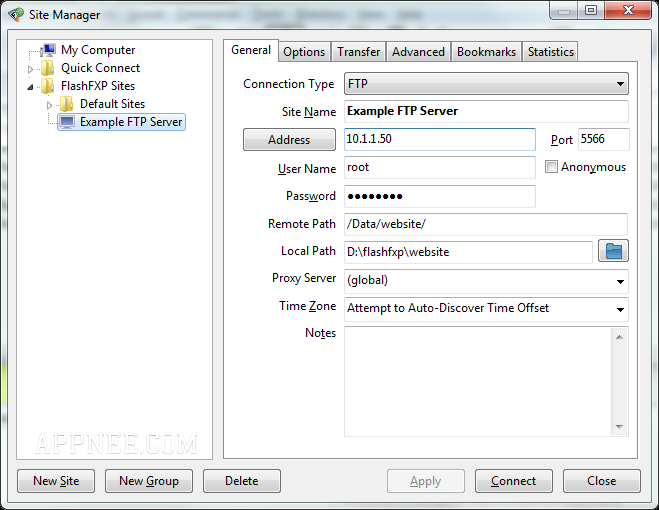

Public static FtpWebRequest GetFtpWebRequest(Uri requestUri, NetworkCredential networkCredential, string method = null) Return director圜ontents //Return all list of Directory Contentss: Files/Sub Directories. Size += GetDirectorySize(string.Format(" //Do nothing incase of Exception occurred. Var dirList = client.GetDirectoryList(pathToDirectory) Public ulong GetDirectorySize(string pathToDirectory) / Can be lengthy to complete on complex folder structures / This will get the size for a directory This can be a bit time consuming on some of our larger servers (sometimes 1-2 min) with complex file structures.Īnyway, this is the method I use with his library: /// The library works well, but you have to recursively get a list of files in the directory and add their sizes together to get the result. I use the FTPS library from Alex Pilotti with C# to execute some FTP commands in a few production environments. Or if it's a unix server I have a vague memory that you could just login and type ls -laR or something to get a recursive directory listing.
#FLASHFXP VIEW REMOTE FILE SIZE DOWNLOAD#
It can be quite slow thought so normally I'd recommended, if possible, to have a script on the server calculate the size and return the result in some way (possibly storing it in a file you could download and read).Įdit: Or if you just mean that you'd be happy with a tool that does it for you, I think FlashFXP does it and probably other advanced FTP clients will as well. Just be aware, if you want to have the total size including all subdirectories, I think you'll have to enter each subdirectory and call it recursively so it could be quite slow. See here for details and here for some sample code. You could send the LIST command which should give you a list of files in the directory and some info about them (fairly certain the size is included), which you could then parse out and add up.ĭepends on how you connect to the server, but if you're useing the WebRequest.Ftp class there's the ListDirectoryDetails method to do this.

exclude=PAT exclude files that match PAT s, -summarize display only a total for each argument S, -separate-dirs do not include size of subdirectories h, -human-readable print sizes in human readable format (e.g., 1K 234M 2G) F, -files print number of files instead of sizes Line argument -max-depth=0 is the same as Only if it is N or fewer levels below the command

d, -max-depth=N print the total for a directory (or file, with -all) a, -all write counts for all files, not just directories For reference, I copy its output here: lftp :~> help du The lftp du command documentation is missing from its manpage, but available within the lftp shell with the help du command. (Thanks to the commenters for the hints!)
#FLASHFXP VIEW REMOTE FILE SIZE INSTALL#
However, lftp is a Linux-only software, so to use it from C# under Windows you would need to install it in the integrated Windows Subsystem for Linux (WSL) or using Cygwin or MSYS2. stderr output is rerouted to stdout with 2>&1 so that it is included in the output. all subdirectories, in human-readable format ( -h) and omitting output lines for subdirectories ( -s). This will print the current directory's disk size incl. You can use the du command in lftp for this purpose, like this: echo "du -hs.


 0 kommentar(er)
0 kommentar(er)
